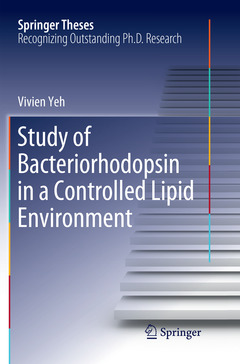Description
Study of Bacteriorhodopsin in a Controlled Lipid Environment, Softcover reprint of the original 1st ed. 2019
Springer Theses Series
Language: English
Subjects for Study of Bacteriorhodopsin in a Controlled Lipid Environment:
Publication date: 01-2019
Support: Print on demand
Publication date: 11-2018
Support: Print on demand
Description
/li>Contents
/li>Comment
/li>
This book focuses on the study of how the properties of nanodiscs, such as lipid composition and size, influence the function of the embedding integral membrane protein, bacteriorhodopsin. The author performed systematic studies to show that the lipid composition and the charge of the hydrophobic head and the structure of hydrophilic tails affect the photocycle pathway of bacteriorhodopsin, which is closely associated with its proton-pumping activity. Furthermore, the author demonstrated a highly efficient method for extracting membrane proteins directly from the biological membrane, preserving protein conformation, function and essential native lipids. This book demonstrates optimization and sample preparation, and presents practical methods of preparing membrane protein-embedded nanodisc samples for biophysical studies, which benefit structural and functional studies in the field of membrane protein characterization, both.
Introduction.- Experimental Background.- Effect of Lipid Composition of Nanodisc.- Effect of Size of Nanodisc.- Native Membrane Nanodisc.- Conclusions and Outlook.- References.- Appendix.




